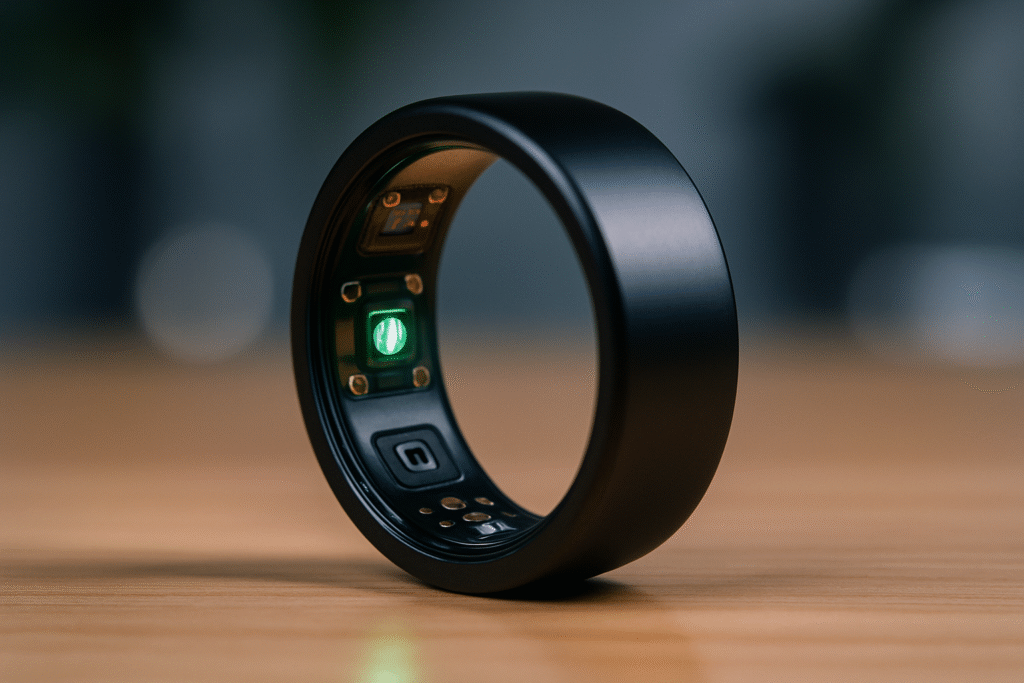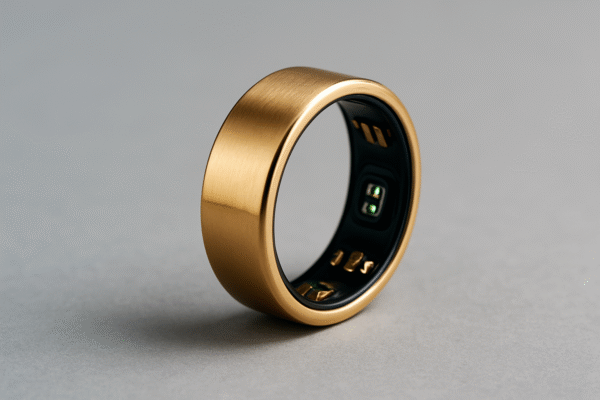Over the past decade, wearable technology has evolved from a niche concept to a mainstream phenomenon.
While smartwatches and fitness bands have dominated the market, a new and exciting player is gaining traction—smart rings.
These compact, stylish devices pack an impressive range of functionalities into a small form factor, offering a blend of convenience, innovation, and modern design.
As technology continues to advance, smart rings are becoming more powerful, allowing users to track health metrics, receive notifications, and even make secure payments without the bulk of larger wearables.
This article takes a closer look at the rise of smart rings, examining their history, features, advantages, potential challenges, and their future in the wearable technology landscape.
What Are Smart Rings?
Smart rings are small, finger-worn devices equipped with sensors and microchips designed to provide similar functionalities to smartwatches but in a more subtle and stylish package. They can monitor physical activity, track sleep, measure heart rate, and even facilitate contactless payments. Some models go further by providing haptic feedback for notifications or enabling gesture controls for connected devices.
Unlike smartwatches, which often require daily charging, smart rings are designed for efficiency. Many models offer battery life that extends for several days or even weeks, thanks to low-power sensors and simplified interfaces. The sleek and minimal design also makes them more appealing to users who prefer understated technology.
Key Features of Smart Rings
Health and Fitness Tracking
Most smart rings come with built-in sensors that can track:
- Heart rate and heart rate variability (HRV)
- Sleep patterns, including deep and REM sleep stages
- Steps, calories burned, and activity levels
- Blood oxygen levels (SpO2)
- Body temperature fluctuations
These health metrics are synchronized with smartphone apps, giving users detailed insights into their overall well-being.

Notifications and Alerts
Some smart rings can provide vibration alerts for calls, messages, or app notifications. While this feature is not as comprehensive as what you’d find on a smartwatch, it’s ideal for users who prefer minimal distractions.
Contactless Payments
Similar to contactless credit cards and smartphones, some smart rings include NFC (Near Field Communication) technology, allowing users to make payments with a simple tap. This feature is particularly convenient for quick transactions, especially when carrying a phone or wallet isn’t practical.
Security and Authentication
Certain smart rings can act as secure authentication tools. For example, they can unlock smartphones, laptops, or even smart home devices without the need for passwords or PIN codes. This makes them an attractive option for individuals concerned about digital security.
Gesture Controls
Innovative smart rings are experimenting with gesture-based controls. These allow users to interact with connected devices—such as adjusting the volume on headphones or controlling a presentation—using simple finger movements.
Why Are Smart Rings Gaining Popularity?
Discreet and Stylish Design
Unlike bulky smartwatches, smart rings are sleek and unobtrusive. They appeal to users who want the benefits of wearable technology without compromising their style.
Convenience and Comfort
Smart rings are lightweight and comfortable, making them ideal for long-term wear. They do not require constant attention or frequent interaction, unlike watches or phones.
Advanced Health Insights
With the rising focus on personal health and wellness, smart rings offer detailed and accurate data. Devices like the Oura Ring are known for their advanced sleep tracking capabilities, often outperforming other wearables in this area.
Battery Life
One of the biggest advantages of smart rings is their battery longevity. Depending on the model, users can go several days or even weeks on a single charge, unlike smartwatches that often need daily recharging.
Integration with Smart Ecosystems
Smart rings can integrate with smartphones, fitness apps, and even smart home systems. This connectivity creates a seamless experience for tech-savvy users.
Challenges Facing Smart Rings
Despite their growing popularity, smart rings face a few challenges:
Limited Display and Interface
Unlike smartwatches, smart rings have little to no screen space, which limits the type of information they can display directly.
Compatibility Issues
Some smart rings are designed to work with specific apps or operating systems. Compatibility with third-party devices can be a challenge for users with diverse tech ecosystems.
Higher Costs
High-end smart rings, especially those with advanced sensors, can be expensive. This cost may deter some consumers, particularly those who already own smartwatches.
Durability Concerns
Since smart rings are worn on fingers, they are more prone to scratches, impacts, and water exposure. Manufacturers are addressing this by using durable materials like titanium and ceramic, but durability remains a concern.
Top Smart Rings on the Market
Oura Ring
The Oura Ring is arguably the most well-known smart ring. It specializes in health tracking, particularly sleep analysis. Its companion app provides in-depth insights into recovery, readiness, and activity levels.
Circular Ring
This smart ring focuses on health and wellness with features like heart rate monitoring, sleep tracking, and even personalized coaching through its app.
McLEAR RingPay
Designed primarily for payments, the McLEAR RingPay allows users to make secure contactless transactions without needing a phone or card.
Motiv Ring
Although less popular now, the Motiv Ring was one of the early players, offering fitness tracking and security authentication features.
The Role of AI in Smart Rings
Artificial Intelligence (AI) is playing an increasingly significant role in the functionality of smart rings. Advanced algorithms analyze biometric data to provide personalized insights.
For example, AI can predict sleep cycles, detect abnormal heart rhythms, or offer tailored fitness recommendations. The integration of AI also enables continuous learning, making the device more accurate over time.
Some smart rings use AI-powered predictive analytics to assess recovery levels, helping athletes and fitness enthusiasts adjust their training schedules.
As AI technology evolves, smart rings will become even smarter, providing real-time guidance and health alerts.
Potential Use in Healthcare
Smart rings are not just fitness gadgets; they are poised to play a role in healthcare. The ability to monitor vital signs, such as heart rate and blood oxygen levels, can aid in early detection of health conditions. For instance:
- Sleep apnea detection: Some rings can detect irregular breathing patterns.
- Stress monitoring: By tracking heart rate variability, smart rings can assess stress levels.
- Remote patient monitoring: In the future, healthcare providers could use smart ring data for remote diagnostics, reducing the need for frequent in-person visits.
Smart Rings vs. Smartwatches
Smart rings are often compared to smartwatches, but each has unique strengths. Smartwatches offer larger screens, more apps, and greater versatility.
However, smart rings win when it comes to discretion, comfort, and battery life. Many users see smart rings as complementary devices rather than replacements for smartwatches.
Fashion Meets Technology
One reason smart rings are gaining popularity is the seamless blend of fashion and technology. Unlike bulky gadgets, smart rings are designed to resemble regular jewelry.
Brands are experimenting with luxury materials like gold, platinum, and ceramics, making them suitable for both casual and formal wear.
Collaborations between technology companies and jewelry designers are expected to accelerate, bringing more stylish options to the market.
How to Choose the Right Smart Ring
Define Your Needs
Do you need a ring for health tracking, payments, or notifications? Different models excel in different areas.
Check Compatibility
Ensure that the smart ring you choose is compatible with your smartphone, fitness apps, or payment systems.
Battery Life
Consider how often you’re willing to charge your device. If you travel frequently, a long-lasting battery is a must.
Comfort and Size
Since smart rings are worn daily, finding the correct size is crucial. Many companies provide sizing kits to ensure a perfect fit.
Budget
Prices vary widely, so balance your desired features with your budget.
The Future of Smart Rings
The future of smart rings is promising. With continuous advancements in miniaturized sensors, batteries, and connectivity, smart rings are expected to become even more capable. Some potential developments include:
- Enhanced biometric tracking: Improved sensors could monitor blood pressure, hydration levels, or stress.
- Integration with augmented reality (AR): Gesture controls could play a key role in AR and VR environments.
- Broader payment and authentication uses: Smart rings might replace wallets, keys, and passwords altogether.
- Fashion-tech collaborations: Partnerships with luxury jewelry brands could make smart rings even more stylish and appealing.
Conclusion
Smart rings represent the next frontier in wearable technology. By blending style with advanced functionality, they are carving out a unique space in the market. While they may not yet replace smartwatches, their convenience, battery life, and health-tracking capabilities make them an attractive choice for modern users. As AI integration grows and healthcare applications expand, smart rings are poised to become essential tools for both everyday life and personal wellness.
